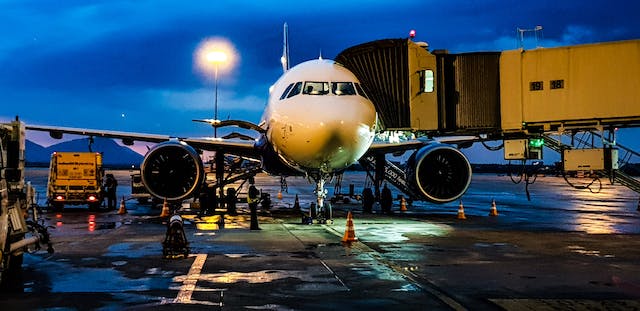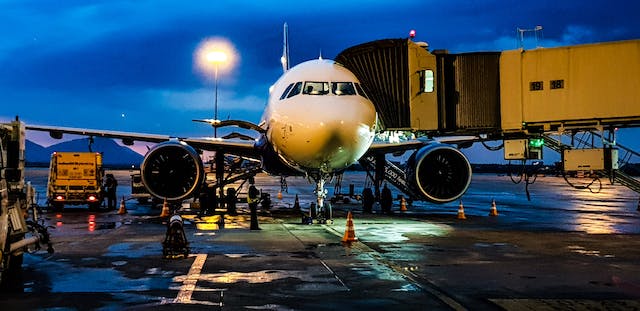

The COVID-19 pandemic has reshaped the global aviation landscape and accelerated the adoption of innovative technologies, particularly in Southeast Asia. The region is witnessing a paradigm shift in airport technology trends, with smart airport solutions at the forefront of this transformation, enhancing passenger experiences, prioritizing safety, and driving innovation across the region.
Post-pandemic conditions have seen airports embracing cutting-edge technologies to navigate challenges and capitalize on opportunities. Smart airport solutions leverage digitalization, offering online check-in, real-time flight updates, and seamless navigation through digital displays. Automated border control and self-service baggage collection during arrival streamline processes, transforming the traveler's journey into an efficient and tech-enabled experience.

Four factors led Southeast Asian countries to enable digitalization in their airports:
1. Growth potential
The exponential growth in the Southeast Asian aviation market, with passenger numbers expected to triple by 2037, presents a compelling opportunity for companies to invest in smart airport technologies to meet escalating demand.
2. Competitive advantage
Airports that embrace digital transformation gain a significant competitive edge. Offering a more efficient, convenient, and secure passenger experience attracts airlines, passengers, and businesses to the region.
3. Improved operational efficiency
Automation in smart airports reduces the need for manual labor, enhancing efficiency, and leading to cost savings for airport operators, fostering sustainable growth.
4. Enhanced passenger experience
Smart airports prioritize a seamless and stress-free travel experience, accelerating processes, reducing waiting times, and enhancing security measures.
The digitalization of airports, as exemplified by Changi Airport in Singapore, brings benefits enhancing both traveler experience and airport operations. Terminal 4's implementation of FAST (Fast and Seamless Travel) and Smart Tower showcases an automated departure process, ensuring a seamless journey with advanced technologies. FAST, an innovation by IDEMIA, automates passenger touchpoints from check-in to boarding, incorporating facial recognition and fingerprint authentication. This streamlines processes and enhances security, allowing passengers to check in without proof of ticket purchase.
At Kuala Lumpur International Airport in Malaysia, the introduction of mobile digital wayfinding through the MYairports mobile application leverages Big Data analytics and IoT. This comprehensive guide provides flight information and facilitates efficient navigation through the airport, resulting in reduced waiting times, increased comfort, flexibility for passengers, and improved overall airport operations.
Indonesia's adoption of technology-based COVID-19 prevention measures, including thermal scanners and UVC light systems for sterilization, ensures rapid monitoring, screening, and enhanced safety for travelers. These technologies play a crucial role in preventing the transmission of viruses through shared surfaces, safeguarding the health of passengers in the airport environment.
On the other hand, Thailand airports utilize high-speed broadband services and the 5G network to offer travelers a seamless and contactless airport experience through mobile applications and AI. This integration enhances data management with RFID tags, improving the efficiency of baggage monitoring and management systems. The result is a significant increase in airport service capacity, enabling rapid and efficient procedures for travelers and airport operators.
Overall, the digitalization of airports in Southeast Asia not only enhances the convenience and safety of travelers but also significantly improves operational efficiency, setting a transformative standard for the future of air travel in the region.

Leading the Charge: Major Players in SEA’s Digital Lending Market
The fintech lending market in SEA is poised for substantial growth, including digital lending which is set to surpass digital payments as the primary revenue driver for the region's digital financial services sector by 2025, with a compound annual growth rate (CAGR) of 33%. This growth is fueled by the widespread adoption of automated loan origination processes and the seamless integration of financial services into digital platforms.

Unlocking Opportunities in the SEA Digital Financial Services Landscape
In recent years, Southeast Asia (SEA) has emerged as a hotbed for fintech innovation, transforming the financial landscape across its diverse markets. This transformation is characterized by a surge in digital financial services (DFS), revolutionizing how individuals and businesses manage their finances. However, the journey is not without its challenges, and understanding these is crucial for stakeholders aiming to navigate this rapidly evolving sector.

How SEA Startups are Navigating Funding Challenges
The startup ecosystem in Southeast Asia (SEA) has long been a vibrant hub for innovation and growth. However, recent global economic shifts and the aftermath of the COVID-19 pandemic have ushered in a new era of funding challenges.

Challenges for Sustainable Recovery in Southeast Asia
Sustainable recovery in Southeast Asia faces numerous challenges, yet also presents significant opportunities for green growth. Addressing sustainable issues is crucial for achieving a resilient and sustainable future.